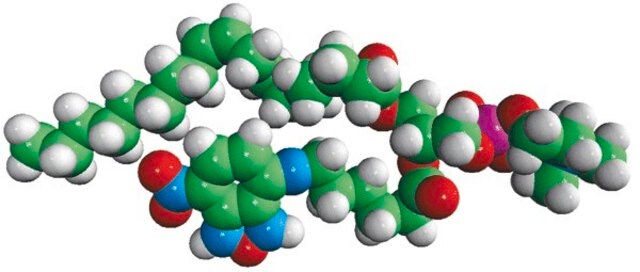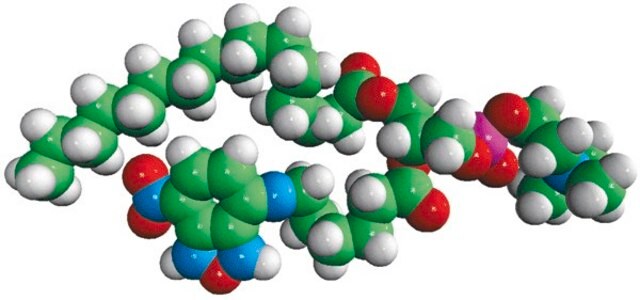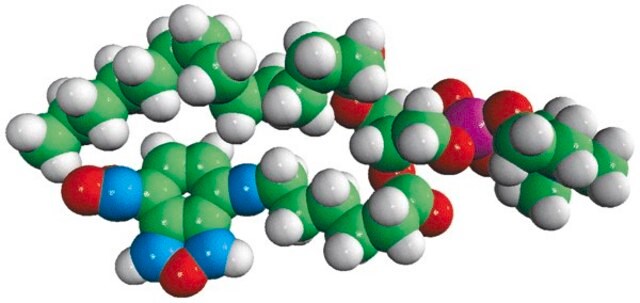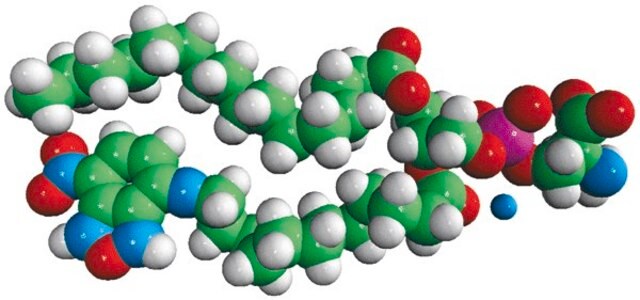810131C
Avanti
16:0-12:0 NBD PC
Avanti Research™ - A Croda Brand 810131C
Synonym(e):
1-palmitoyl-2-{12-[(7-nitro-2-1,3-benzoxadiazol-4-yl)amino]dodecanoyl}-sn-glycero-3-phosphocholine
About This Item
Empfohlene Produkte
Assay
>99% (TLC)
Form
liquid
Verpackung
pkg of 1 × 1 mL (810131C-1mg)
pkg of 5 × 1 mL (810131C-5mg)
Hersteller/Markenname
Avanti Research™ - A Croda Brand 810131C
Konzentration
1 mg/mL (810131C-1mg)
1 mg/mL (810131C-5mg)
Versandbedingung
dry ice
Lagertemp.
−20°C
Verwandte Kategorien
Allgemeine Beschreibung
Anwendung
- in the microfluidic chip-based technology to demonstrate separation of fluorophore-labeled phospholipids and to monitor enzyme activities of lipid-modifying enzymes
- as a fluorophore for DPPC in fluorescence recovery experiments
- as a substrate to test scramblase activity
Biochem./physiol. Wirkung
Verpackung
Rechtliche Hinweise
Signalwort
Danger
Gefahreneinstufungen
Acute Tox. 3 Inhalation - Acute Tox. 4 Oral - Aquatic Chronic 3 - Carc. 2 - Eye Irrit. 2 - Repr. 2 - Skin Irrit. 2 - STOT RE 1 - STOT SE 3
Zielorgane
Central nervous system, Liver,Kidney
WGK
WGK 3
Analysenzertifikate (COA)
Suchen Sie nach Analysenzertifikate (COA), indem Sie die Lot-/Chargennummer des Produkts eingeben. Lot- und Chargennummern sind auf dem Produktetikett hinter den Wörtern ‘Lot’ oder ‘Batch’ (Lot oder Charge) zu finden.
Besitzen Sie dieses Produkt bereits?
In der Dokumentenbibliothek finden Sie die Dokumentation zu den Produkten, die Sie kürzlich erworben haben.
Unser Team von Wissenschaftlern verfügt über Erfahrung in allen Forschungsbereichen einschließlich Life Science, Materialwissenschaften, chemischer Synthese, Chromatographie, Analytik und vielen mehr..
Setzen Sie sich mit dem technischen Dienst in Verbindung.









